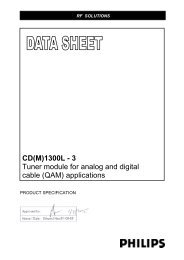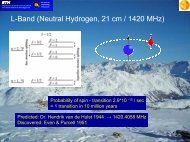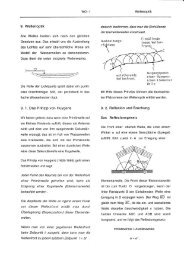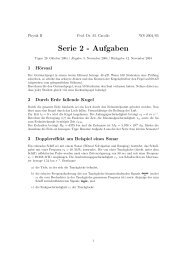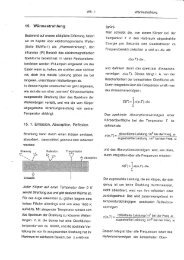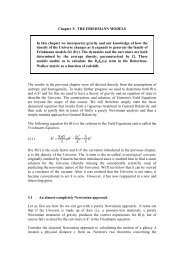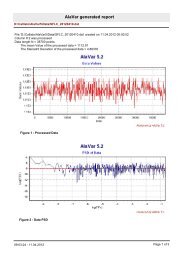here - Institute for Astronomy Umleitung
here - Institute for Astronomy Umleitung
here - Institute for Astronomy Umleitung
Create successful ePaper yourself
Turn your PDF publications into a flip-book with our unique Google optimized e-Paper software.
Title: Science Case<br />
Reference: MUSE-MEM-SCI-052<br />
Issue: 1.3<br />
Date: 04/02/2004<br />
Page: 29/100<br />
SSA22 proto-cluster (z=3.09) hint that the same is likely to be true in high redshift systems<br />
(Fig 2-10).<br />
The geometry of this flow is an important constraint. Is the galaxy <strong>for</strong>mation process<br />
terminated by an explosion that drives a near spherical shell, or is t<strong>here</strong> a balance between a<br />
bi-polar outflow and continued inflow along orthogonal directions? These are key questions<br />
that we can compare to numerical simulations that are being developed to model super-wind<br />
out-flows in proto-galaxies.<br />
Each pointing will identify ~15 objects with continuum magnitudes brighter than I AB =23, we<br />
will detect the rest-frame UV continuum with sufficient s/n to map the velocity structure of<br />
the neutral ISM through absorption lines such as SiII. This will allow us to map the structure<br />
of both the emitting and absorbing material, making a very detailed test of the geometry of the<br />
outflow/inflow and thus allowing us to assess the balance of cooling and feedback.<br />
2.5.2. Measuring Feedback with QSO sightlines<br />
A powerful technique <strong>for</strong> studying the larger scale impact of feedback is to target fields<br />
containing QSOs that are sufficiently bright <strong>for</strong> absorption line studies. In this way, the<br />
redshifts of the Ly α emitters can be compared to absorption features in the QSO spectrum<br />
(often referred to as the Ly α <strong>for</strong>est), allowing us to probe the association between the young<br />
galaxies and the neutral gas from which they <strong>for</strong>m.<br />
Adelberger et al., (2003) per<strong>for</strong>med this experiment using Lyman-break galaxies at z~3.<br />
For galaxies with a large separation (>2 co-moving Mpc) from the QSO sight-line, they found<br />
that t<strong>here</strong> was a higher than average probability of an absorption feature, as is shown in<br />
Figure 2-11. This is the result of the cosmic web discussed in section 2.3 and shows that<br />
galaxies are <strong>for</strong>med in regions of large scale overdensity, as we would expect from<br />
simulations of the large-scale structure of the universe.<br />
At small separations (




